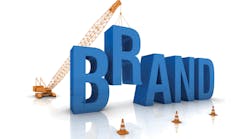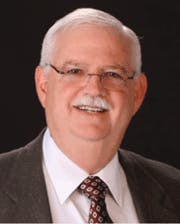Marketing professionals deliberately create what they call "brands." A product's brand labels it and gives it an identity and characteristics. When consumers think of a product or see its name or logo, the branding creates the image and impression.
The image created by the brand can affect the consumer's reaction to the product and the decision to purchase or not to purchase the product. Brands also can reinforce the buying decision and boost pride of ownership. Good marketers can apply the principles of branding to all types of services, programs or even sports teams. Branding can make something seem stylish, fun, classy or altruistic.
More and more, forward-thinking organizations are branding their safety initiatives. The process of branding your safety efforts or programs within the overall safety strategy can produce some desirable and profitable results. Safety branding can be used to improve safety performance, enrich the safety culture, boost employee engagement or simply make participation in safety activities more rewarding and satisfying.
If you want to see whether or not branding safety might help your organization, begin by discovering what brand your safety initiative currently has. Just because you haven't deliberately created a brand doesn't mean that you haven't inadvertently developed one. Here are some questions that can give you a sense of your safety brand:
- How do your associates think about your current safety efforts? What do people picture when they think of safety?
- Where does safety fall on the list of organizational priorities?
- Do leaders walk the talk in safety or just give it lip service?
- Is safety training valuable or boring?
- Do safety meetings make work safer or just check off another box in the supervisor's to-do list?
- When associates choose to participate or not participate in safety, what happens?
- Are safety indicators getting better, getting worse or staying the same?
- Is safety data communicated effectively?
- Is safety a serious subject, or a joke?
Once you have determined your current safety brand, decide what you would like your ideal brand to be. When your associates think about safety efforts, how would you like them to perceive it and how would you like them to respond? The following issues should be among your primary considerations in making these decisions about your safety brand.
Brand Awareness
If you want to rebrand your safety efforts, begin with the outward artifacts of brands. They include some or all of the following: name, logo, tagline or catchphrase, graphics and color schemes. Your choice of these elements will begin to define how workers should feel about safety. The strength of these branding elements will be determined by how effectively you communicate them. Can you put them where everyone sees them on the way to and from work or throughout the workday? Can you reinforce them in written communication such as newsletters? Like advertising, branding depends on repeated exposure. Try to expose every worker to your visual branding a minimum of three times per day and reinforce the visual with verbal mentions in every safety meeting.
Brand Association
With what do you want people to associate your safety programs? You can brand your safety efforts as a team sport or as a war on accidents, as complying or caring, as thoughtful or heartfelt, as competitive or cooperative. It's important to begin with the end in mind. Automobile manufacturers spend a lot of time, effort and resources on branding. If your safety program were a car, what brand of car would it be? You can brand safety as sleek and fast, rugged and dependable, heavy-duty, classy, luxurious or practical simply by associating it with an automotive brand that stresses the same qualities. Be mindful of how your brand compares or contrasts to other well-known brands and ensure that the association is harmonious with your desired brand.
Brand Trust
The next task is to begin to build trust in your brand. Workers must sense that the safety effort is sincere and practical. The brand must improve efforts, the efforts must improve results and the results must be visible to the workforce. Visible progress toward goals not only builds trust in the new safety brand but also motivates people to participate. It's crucial for leaders to stay on course and on message and patiently build trust in the brand. Trust is built slowly over time but can be destroyed almost instantly. For this reason, it's critical that your branding efforts are not undone by other factors. Leaders who talk sarcastically about the brand, refuse to invest resources in safety improvements or exempt themselves from practicing what is being preached are common factors that destroy brand trust. Be on guard and don't let these or other factors creep into your program and weaken trust.
Brand Parity
Products often are marketed in groups to create the perception that they have equal value or quality. In safety, this concept can be used to establish the priority of safety in comparison with other organizational goals. Carefully consider it before declaring that safety is your highest priority. After such a declaration, any decision that doesn't put safety first can damage the brand trust. When safety is branded as equal to other priorities – such as quality and productivity – it creates parity, which can dramatically improve safety efforts and results.
The way people think about safety affects how they react to safety programs, both mentally and emotionally. When safety has a brand that elicits the right combination of caring, teamwork and focused action, performance can reach levels of excellence not previously possible. Branding is an element of strategic management that is quickly getting the attention of forward-thinking leaders. The fact is that your safety program already has a brand. It's up to you if you want to deliberately transition it from what it currently is to what it ideally could be.

